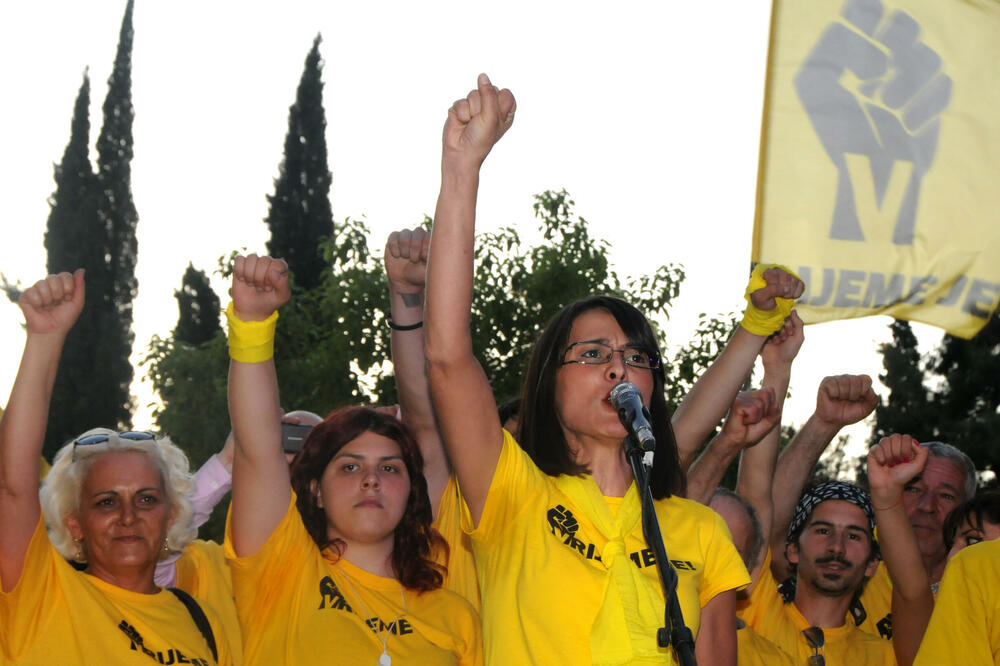For years, the Montenegrin public has asked the question why there are no major protests and rebellions in Montenegro, which from today's perspective seems quite unfounded, because things have fundamentally changed in just over a decade.
In an era when student protests around the world were current, as well as fierce protests due to austerity measures in Greece, the first serious and mass protests were organized in 2011 and 2012 in Montenegro. It started with student protests, quite numerous, and very interesting and creative gatherings, which caught the attention of the general public, and then it was announced that they would organize a protest together with representatives of trade unions, which led to a split among students, and then they mentioned and political pressures.
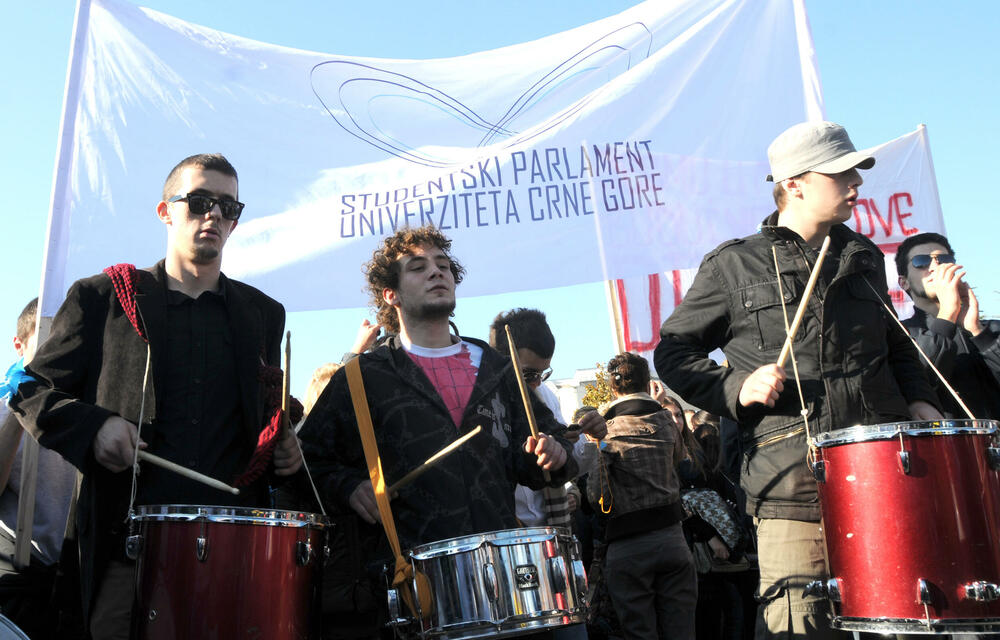
Some of these students were later politically active, but they did not produce the kind of political leaders that they did in the late eighties when the student protests, which later merged into the AB revolution, threw the graduated students onto the public stage. Mila i Aca Đukanović, but also young professors and assistants Momir Bulatović, Milica Pejanović Đurišić, Ljubiša Stanković, Srđa Darmanović...
The protests did not stop, the Network for the Affirmation of the Non-Governmental Sector (MANS) took the lead and the slogan of the protest was "It's time". The main targets of the protests were the regime of Milo Đukanović and the government he led at the time Igor Luksic. The immediate reason was the introduction of the so-called "euro by euro" taxi. After that, protests were organized sporadically, but there were interesting moments, and certainly one of the most authentic protests was the one in Berancelo, where the citizens were at war with the local authorities for a long time because the garbage was dumped at the local source and those protests, led by an American citizen Jovan Lončar, reached the Parliament building, and young politicians like today's prime minister appeared on them Dritan Abazović.
What was the common content of all those protests was that practically there were no effects, at least immediately visible in the direction of realizing the demands of the protests. It seemed that the protests that started after the presidential elections in 2013 had great potential, which are still commented on to this day as one of the crucial points in the political path of the DPS, and which a good part of the public saw as an indication that the party is not ready to leave the power, or part of the power, to a moderate candidate like him Miodrag Lekić. But those protests ended with big announcements. One of the interesting protests, which ended in a clash between the police and the crowd, was held in early 2014 as a sign of support for the large-scale protests in Bosnia and Herzegovina. After part of the crowd attacked the police with stones, and the security forces responded with tear gas, part of the crowd sat down on the street and blocked traffic.
The police arrested them, and how different the Montenegrin political and social scene was then is shown by the fact that the current MP and leader of Prava Montenegro was arrested then. Marko Milacic, who was a journalist at the time, and is currently a professor at the Faculty of Montenegrin Language and Literature Boban Batricevic, who was then the spokesperson of Forum 2010, a group that harshly criticized the DPS and the Đukanović regime. Almost 10 years later, Batrićević is one of the most vocal opponents of the current government, and Milacić is part of that same government.
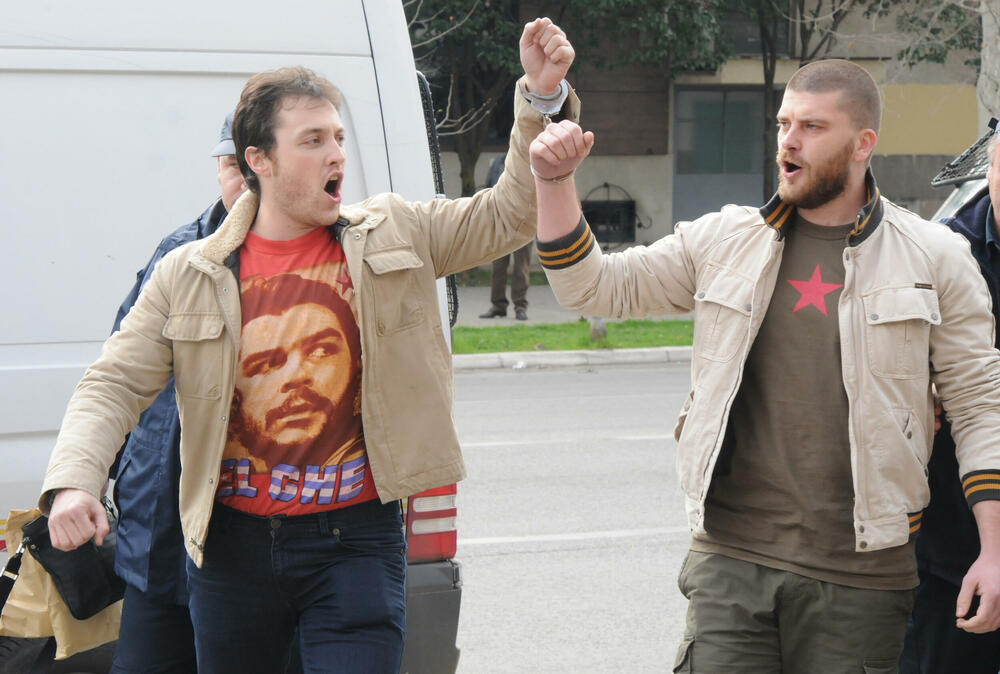
In 2015, the Democratic Front started protests in front of the Assembly and organized a "tent settlement", where their political leaders often slept. At the very beginning of those protests, the government at that time decided to break them up violently, which caused a wide reaction from the public, which, mainly through social networks, organized itself and sent an appeal signed by a large number of intellectuals, activists, citizens...
This led to mass gatherings, although the protests were then still formally organized by the DF, and it all ended on October 24, 2015, when a group, never discovered, threw Molotov cocktails at the police, followed by general chaos, the beating of citizens on several location by the police, including an unprecedented brutal beating Miodrag Martinović, who was beaten by more than ten policemen.
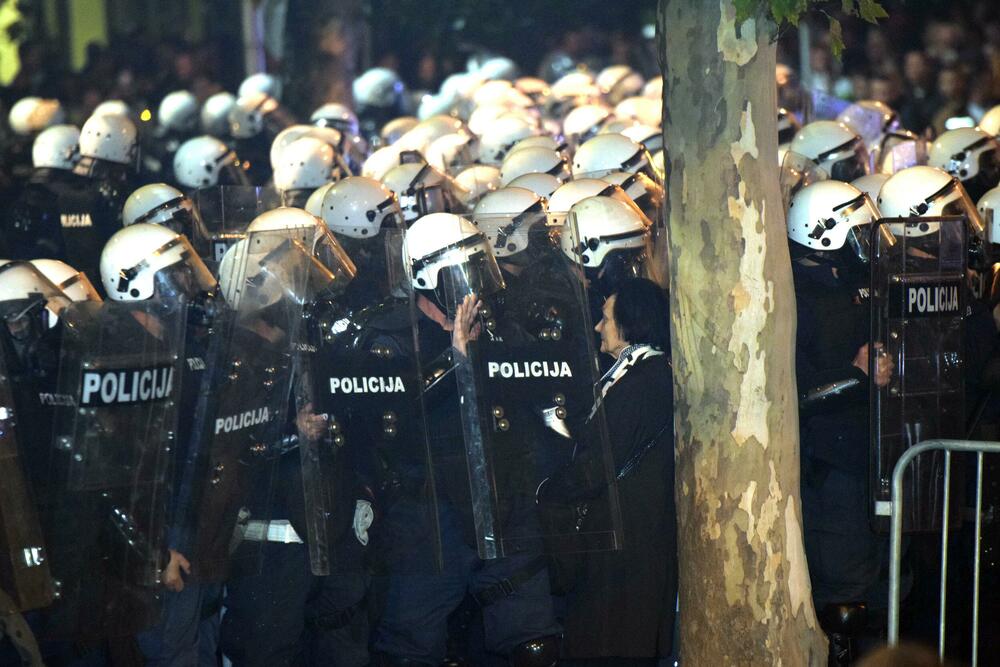
Those protests, in turn, led to a political dialogue that resulted in the formation of the so-called Electoral Confidence Government, which prepared the 2016 elections.
There were protests in the following years as well, but not particularly massively, until 2019, when citizen protests began in Bar because the local government cut down dozens of cypress trees early in the morning for the construction of a kindergarten, even though the citizens had opposed it for months. Gatherings followed, where the police often intervened, and the local government remained silent.
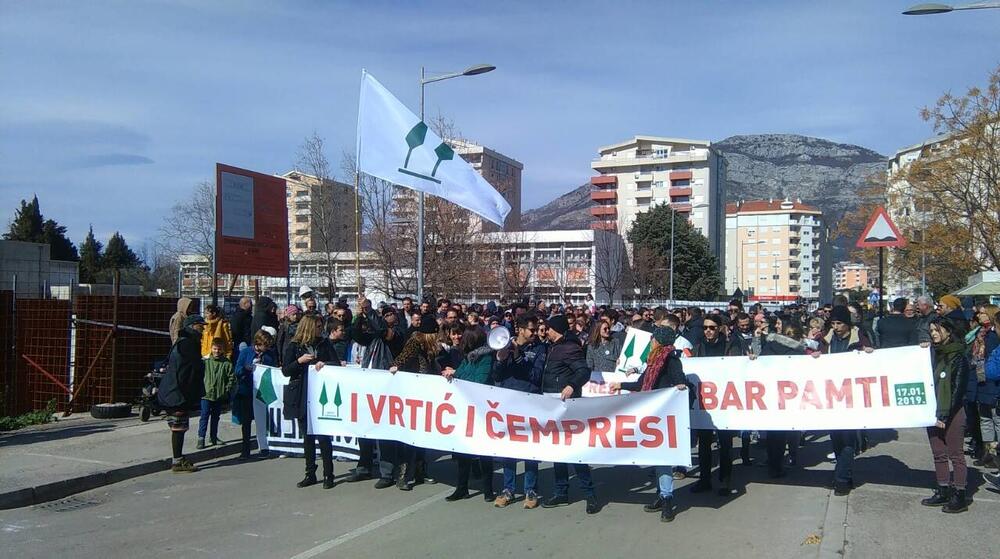
Soon, a group of civil activists from several Montenegrin cities organized Resist protests, after a video appeared in which a businessman Dusko Knezevic gives money to a DPS official Slavoljub Stijepović.
At that moment, the Odupri se protests were one of the most massive in the history of Montenegro and led to the fact that the then opposition signed that they would not go with the DPS and that they would boycott the elections, which did not last long.
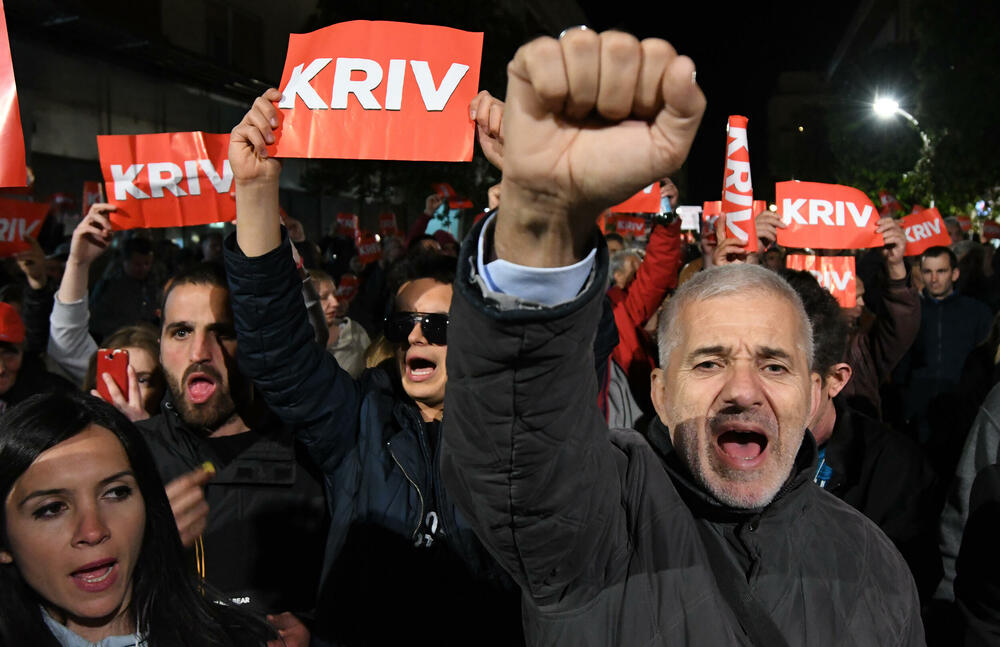
At the same time, the protests continued in Bar, which resulted in an extraordinary address by the then prime minister Duško Marković who said that they were abandoning the project and that they would return the park to its previous state. It was the first and very significant victory and the trigger for a series of environmental protests with similar effects (Crno jezero, Sinjajevina...).
The most massive protests were those organized by the Serbian Orthodox Church, known as protest litias, which were organized in most Montenegrin cities, and over time grew into a general civil rebellion and are responsible for the dismissal of the DPS government in August 2020. The main feature of litias, but also of protests The "cypress trees" and Odupri did protest if they were not organized and managed by political subjects, and where they did get more involved, these protests soon lost their strength and died out.
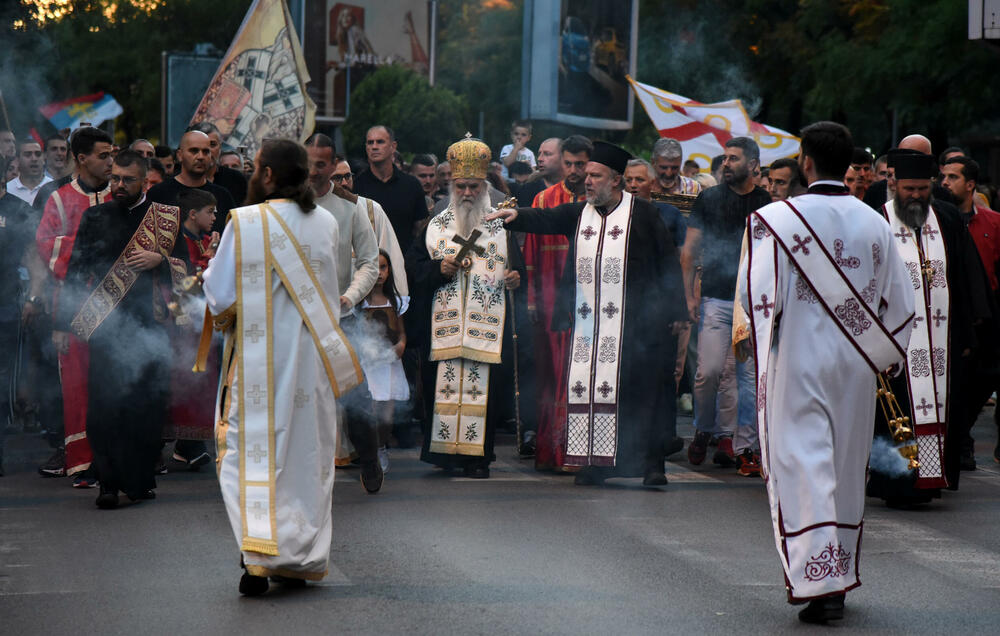
It would be wrong not to mention the large protests in Budva due to the violent change of government in that municipality, but also the gathering of support in several cities where citizens were regularly arrested. After the change of government in August 2020, a large "patriotic protest" was organized in Podgorica where thousands of people gathered, and this was the trigger for a series of frequent protests due to various decisions of the Government Zdravka Krivokapića.
The largest and most significant protest of its kind was at the beginning of September 2021, when citizens gathered in Cetinje protested against the enthronement of the Metropolitan of Montenegrin-Limitarian Joanikia in that city and then blocked the main road. Hours of uncertainty followed, police fired large amounts of tear gas and the action was even praised by international partners. The media close to the DPS are still reporting on that event as a brutal and never-before-seen demonstration of force and violence, and the activities of the prosecution, which seems reluctant to act in the case, have been followed by a rarely seen attempt at media pressure in the form of texts signed by those directly and indirectly participated in those protests.
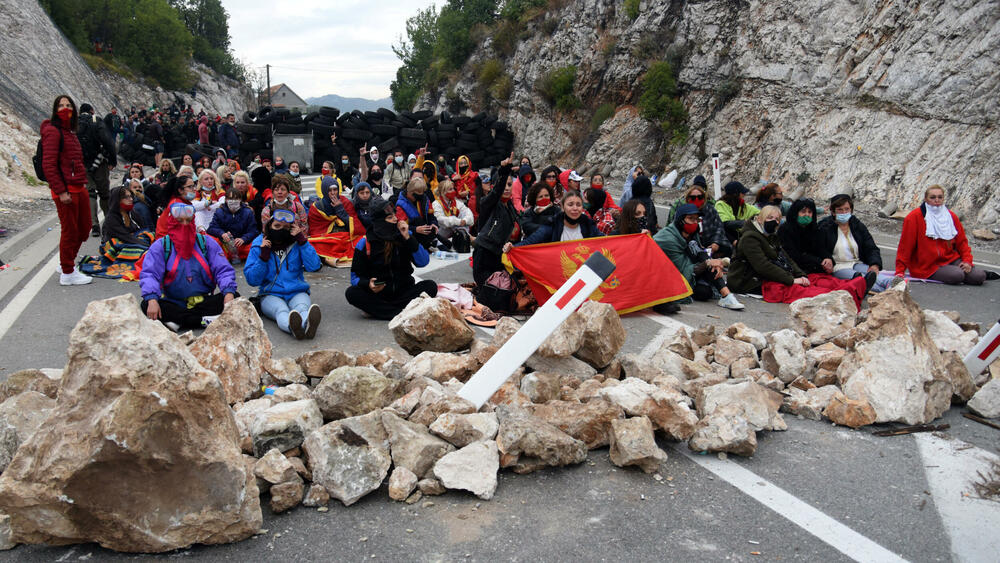
The last major protests were organized at the end of 2022 under the slogan "Ima nas", where extraordinary elections were demanded, but they also quickly died down. Although it was said at the time that the protest was organized by several structures, and that the opposition supported them, the Viber group "Ima nas" is still active with thousands of members and, almost exclusively, propaganda content of the Democratic Party of Socialists is distributed on it.
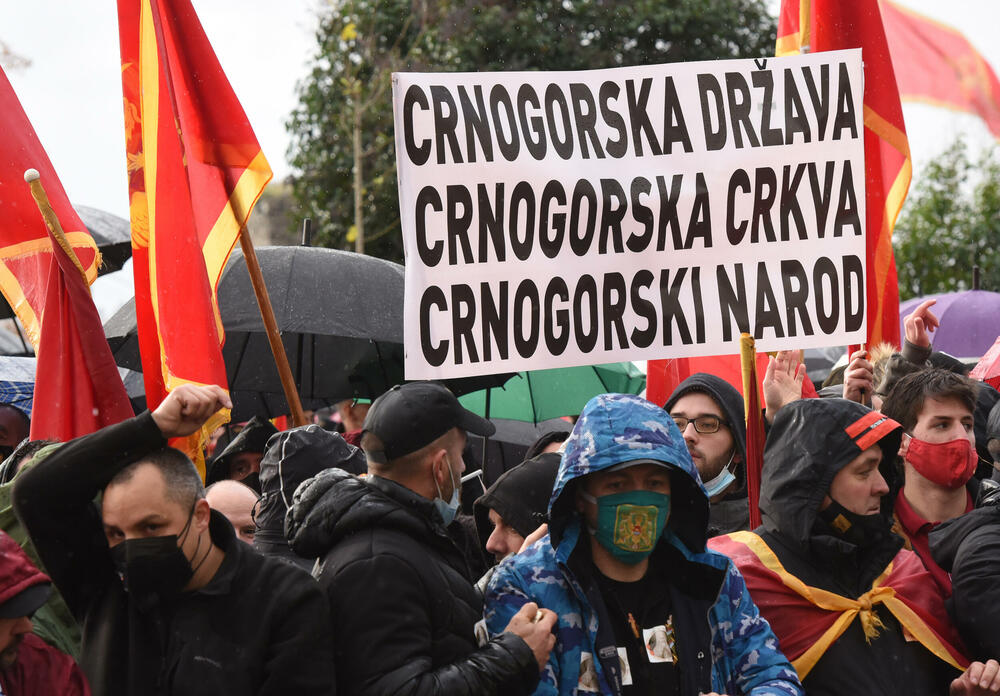
Serbia: Already seen, but not this massively
"Like crazy, I go from meeting to meeting because of them, and they both found work on their own!" A few years ago, this is how a mother of two grown sons explained her retirement meeting tour with the Serbian Progressive Party of the Serbian President in two or three years. Aleksandar Vučić "toured" the whole of Serbia, occasionally being honored with a daily allowance, an obligatory sandwich and a bottle of water.
Whether he would continue the tour was not certain even on Friday before the "biggest ever" rally (when this text was written, due to technical reasons required by the cooperation format). A little because of the years that make it difficult for the experienced rally woman to move and stand with props for a long time, a little because, as her husband and her are pensioners, there is no one and nothing to blackmail her with. However, there is no doubt that she is one of the many sincere supporters of the Serbian president, including his "people's events". And she is far from lonely.
The new meeting was scheduled after the first mass rally "Serbia against violence", held on May 8 as a reaction to two mass murders at the beginning of the month; in the Belgrade elementary school "Vladimir Ribnikar", a student killed nine children and a janitor on the morning of May 3, and less than two days later, a young UB (21) killed eight young people with automatic weapons in the Šumadija villages of Duboni and Mali Orašje.
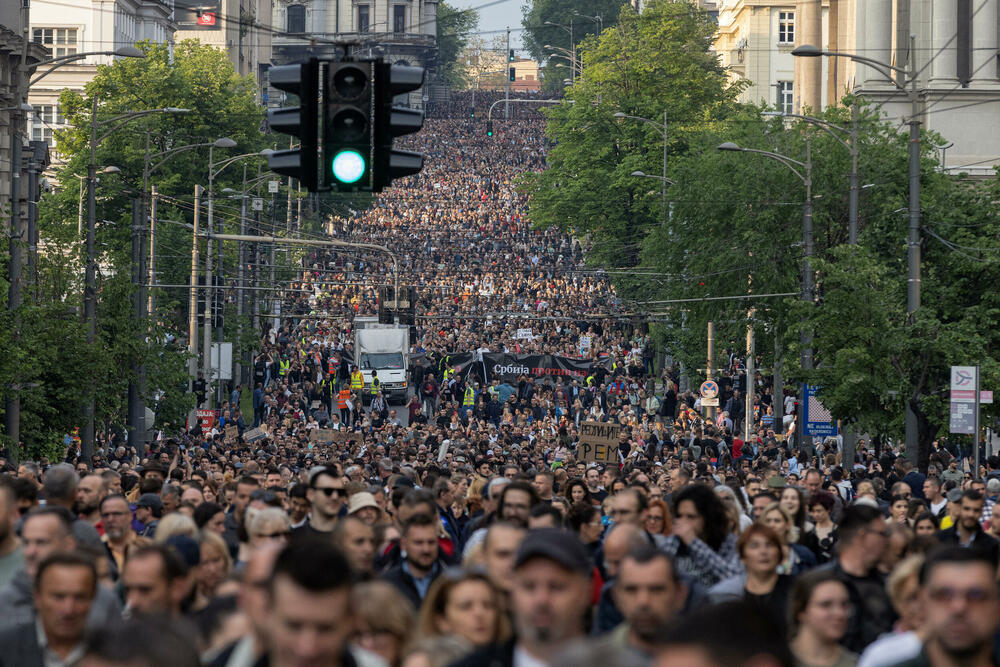
Unprecedentedly serious crimes in Serbia, which has a rich history of mass murders, but not this dramatic and condensed, caused a spontaneous reaction of citizens oversaturated with a long-cultivated atmosphere of fear and violence. At the third rally on Friday, May 19, more than one hundred thousand people gathered and blocked two bridges on the Sava Gazela and Brankov. According to the estimates of impartial observers, it was the largest gathering after the funeral of the prime minister Zoran Djindjic, killed in an assassination on March 12, 2003.
There are two newspapers in mass gatherings that continue on May 27; an extremely large percentage of young people, who have been apolitical for a long time, and a long-forgotten "symbiosis" of politicians and citizens. This corresponds, on the one hand, to the fierce campaign against the opposition that has been carried out through the formal pro-regime media for a whole decade, and on the other, to the rise of mostly green protests. However, the fact that the leaders of several opposition parties took over the formal organization, as well as possible legal consequences, to a good extent restored the shaken confidence in the opposition. But not completely, because for the time being the noticeable restraint of the demonstrators may soon be crowned as the split between the two Serbias - that of Vučić and the one that opposes him - is becoming increasingly clear, and the impatience of the citizens to change the government as soon as possible, and with it the state of society, is growing. .
Furthermore, rallying for protests is nothing new in Serbia; in those days, memories of the months-long protests of the Zajedno u winter '96/97 coalition are evoked. after the dramatic election theft and the counter rally that he organized on December 24, 1996 Slobodan Milosevic. Two people died then, although the leaders of the civil protest were Zoran Đinđić, Vuk Draskovic i Vesna Pesic tens of thousands of citizens were taken for a walk in a part of the city where there were also numerous "counter-demonstrators".
That scenario, a direct collision, was avoided because the organizers from the opposition scheduled a new protest "Serbia against violence" for Saturday.
In the meantime, the demands made at the beginning were partially fulfilled - the beginning of the parliamentary debate on security - at a session scheduled at the request of the opposition - turned into a brutal showdown between the government and the opposition MPs and the media, and it spread to artists who actively support the shake-ups. The Prime Minister leads the way in recklessness Ana Brnabic and the Speaker of the Parliament Vladimir Orlic, and the president uses his favorite channels to completely clarify the division between "them" and "us". "They - on the street - want Maidan, his head, power without elections, and "we" offer unity (?) and hope. We have already seen the scenario under the control of Milošević. Who believed he would never fall.
Vučić, who was taught by that experience, is really sore from the protests, because as of a year and a half ago, after several blockades of the highway and the Gazela bridge, he bowed down to the names of lithium mining, and according to the estimates of both the government and the opposition, ten times fewer people protested then. Now the government, knowingly or blinded by its own resources and intentions, is watching both the opposition and the citizens, literally blocking the entire country, dragging those who want and those who don't to the counter rally.
Despite everything, the youngest opposition leader Pavle Grbović believes that with every protest - but also the blunders of the authorities that are multiplying day by day - it is more and more realistic to fulfill the demands, including the confiscation of the national frequencies of the "herbs" TVs Pink and Happy, the banning of tabloids that spread hatred, the removal of members of the REM Council and the minister of the police Bratislava Gašića.
"This can be seen from the reaction of the authorities. They will simply have to yield if the pressure is strong enough and long enough. We must not give up and we must not be disappointed that something was not solved in one day", says Grbović.
If the riots in the north of Kosovo that started on Friday do not turn into a reason for a new state of emergency. Which can consequently cause fierce conflicts.
In Croatia, there are no protests because of economic problems, sexy topics pass by
The smaller the reason, the greater the chance of a serious protest in Croatia. This is claimed by a political analyst professor Žarko Puhovski.
"For example, for three trees in Varšavska street, half of Zagreb was on its feet for months, and a strong political movement arose from it. Furthermore, from the so-called struggle for 0,07 percent of the state budget gave birth to the urban-legendary plenum movement at the Faculty of Philosophy. Therefore, it was not about a serious reform of education, nor a serious encroachment on the general urban plan. When the union tried on several occasions to organize a gathering for May Day regarding the difficult situation of workers, especially those with fixed-term contracts, it happened that only 500 people came to Trg ban Jelačić. When it comes to hysterical topics like vaccination, it's no problem to get people together, or when it's a completely incoherent story about supposed school reform with Boris Jokić and gathered several tens of thousands of people. And if you asked the question whether you would protest against the catastrophic material condition of the schools, you would not even get 300 people. The so-called sexy topics that motivate people, but are not necessarily important for society", believes Puhovski. The most massive protest in Croatia was the one on November 21, 1996 at Ban Jelačić Square in Zagreb, where, according to estimates, around 120.000 citizens gathered to support Radio 101, which was left without a concession. The Telecommunications Council granted the concession to Radio Globus 101, and when the employees said that they would not give up without a fight, they received unprecedented support because for the first time since independence, the citizens of Croatia expressed their dissatisfaction en masse. First and last time.
Among the more massive protests, the educational one in November 2019 is also memorable. The reason was the stubbornness of the Government, which did not give in to the Croatian Teachers' Union and the Independent Union of Secondary School Employees, who requested an increase in the job complexity coefficient by an average of 6,11 percent. A circular strike was launched, which lasted for more than a month, and several thousand dissatisfied teachers gathered at Trg bana Jelačić.
"No worker can fight for a better status on his own, but organized into unions and with the unity and activism of all union members, we can do miracles," exulted the union representatives. The veterans' protest in Savska 66 from 2014 to 2016, in front of the Ministry of Veterans, is also memorable. It was the time when the coalition government in Vukovar tried to put up bilingual plaques, and a procession led by veteran associations blocked the way for members of the government in the column in Vukovar. The protest in Zagreb began when, two months before the presidential elections, veterans erected a tent that stood there for over 550 days. The resignation of the Minister of Defense was demanded Predrag Matić, pronouns Vesne Nadj and advisers Bojan Glavašević whom they criticized for equating victims and aggressors. Counter-demonstrators gathered under the name Occupy Croatia also appeared. Gas bottles were also seen, and the gathered spent the night in the church of St. Mark. Last year, protests were held in several cities against the destruction of public health and the neglect of women's health, as a sign of solidarity with women who are denied the right to abortion. In May 2022, protests were held in Zagreb, Pula, Rijeka, Sisak, Split, Šibenik, Osijek, Zadar... Doctors also protested to save Croatian healthcare. Student protests in Croatia are rare, and the most memorable one was in 2009, when they demanded free and accessible education for all. They protested even when they were not satisfied with the quality of the food. Farmers blocked the roads with tractors... But nothing more massive.
"There is a belief among people that nothing important can actually change. There are no serious organizations in our country that would see themselves as potential leaders of protests, except perhaps the Workers' Front, which is small and weak. Second are the so-called questions. national provinces. The Homeland Movement introduced topics that cannot be resolved by protests, such as the return of documentation on the missing, which is requested from Serbia. This cannot be solved by gathering 30 or 50.000 people in Vukovar, which every reasonable person knows, but it is a topic that can be radicalized. These are ideal topics, intractable and painful, which can be manipulated from time to time", concludes Puhovski and adds that in Croatia there are no protests over economic topics because the situation is such that the rule that is usually mentioned in descriptions of the French Revolution applies - there are no major reactions when it's the worst because people are paralyzed by worrying about survival.
Political analyst Ankica Mamic says that a bigger and more "serious" protest has not been seen in Croatia since the support for Radio 101 27 years ago.
"There will be no protest over expensive food and living costs. We can talk about inflation and that the middle class is slowly sinking, but realistically, life is still good in Croatia. Almost all of us own the real estate we live in, and by European standards, this is an extremely large percentage. The part of Croatia that lives on tourism, not only on the coast, fixes household budgets and leads to the fact that we do not have extremely poor people. Real social rights, on the other hand, are largely dependent on the state and are not a pool for real protests. As a nation, we are not overly prone to protests," Mamić points out.
BiH: Justice for David, the biggest rebellion
The most powerful rebellion in post-war Bosnia and Herzegovina took place in 2018 in Banja Luka, when daily protests were held on Krajina Square due to a murder. David Dragicevic. But, after the election, the protests were suppressed, the "Justice for David" movement was broken, and David's murder is still unsolved.
Protests have been taking place in France, Spain, and Germany for weeks. You are on the streets to the citizens of Serbia after two massacres. However, it seems that there is not a single thing in Bosnia and Herzegovina - not even the daily increase in the price of basic foodstuffs, fuel and electricity - that would bring citizens to the streets. All the protests held so far were only semi-political confrontations between everyone and everyone. Even if they were held, civil protests would not have the power to bring about changes.ž
Communicator and journalist Mladen Bubonjić he says that the protests need a socio-political one momentum. It is far from the fact that there are no reasons for civil rebellion in our country, but it does not happen for several reasons.
"First of all, civil disobedience and rebellion require civil awareness, which our society has not yet achieved to a sufficient degree that when protests do occur, which there have been, they are most often politically driven, whether by the opposition or by the government , which is otherwise a socio-political paradox that the rulers are protesting, which we can see in Serbia as well, said Bubonjić.
The government, he adds, has been successfully making political and social life meaningless for years, creating a huge base of apathetic citizens who are difficult to motivate and initiate protests. In addition, the opposition, for which it is politically natural to protest, has repeatedly abused not only civil rebellion, but also human tragedies, so that citizens have less and less trust in them.
"At the moment, the phenomenon of a crisis of confidence dominates, and not only here. Populists and the media close to them successfully create an atmosphere of mistrust. Their goal is not to convince citizens/potential voters of something, but to make them doubt everything. In such an atmosphere, it is really difficult to animate citizens to revolt. I am afraid that the "boiled frog" trend will be present in our society for a long time, threatening to become a commonplace", said Bubonjić.
Bonus video:



